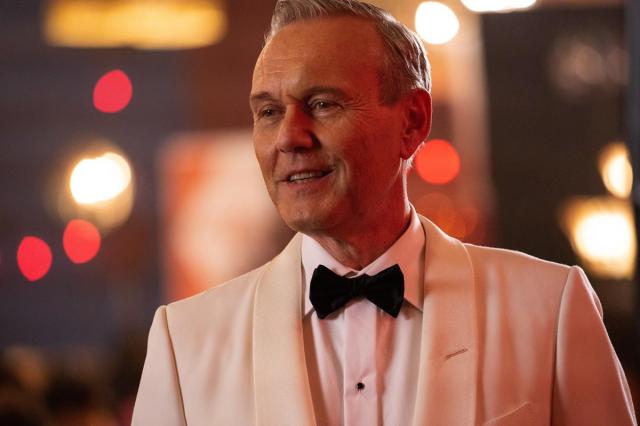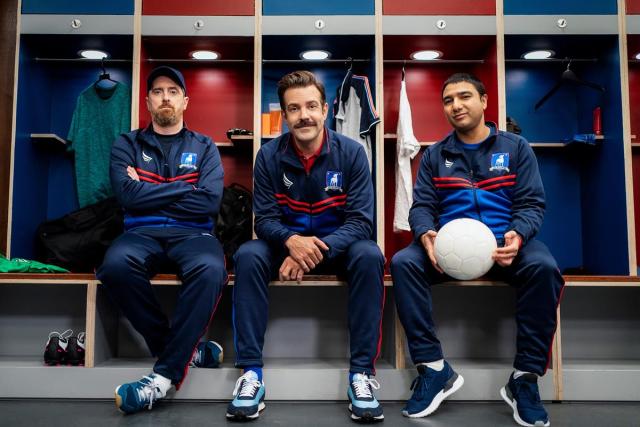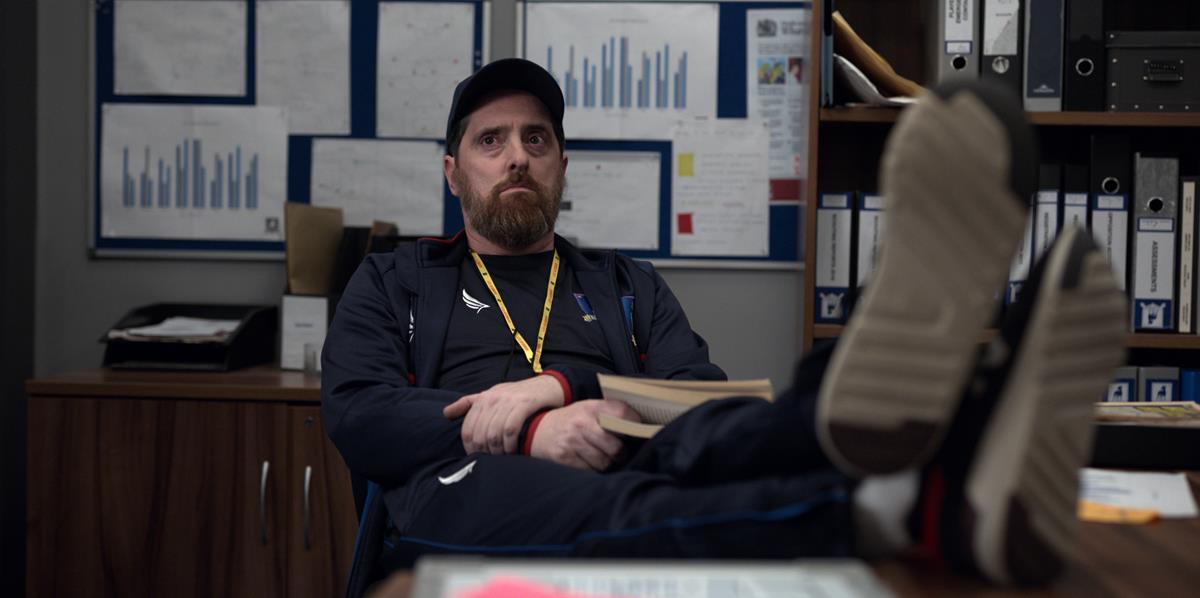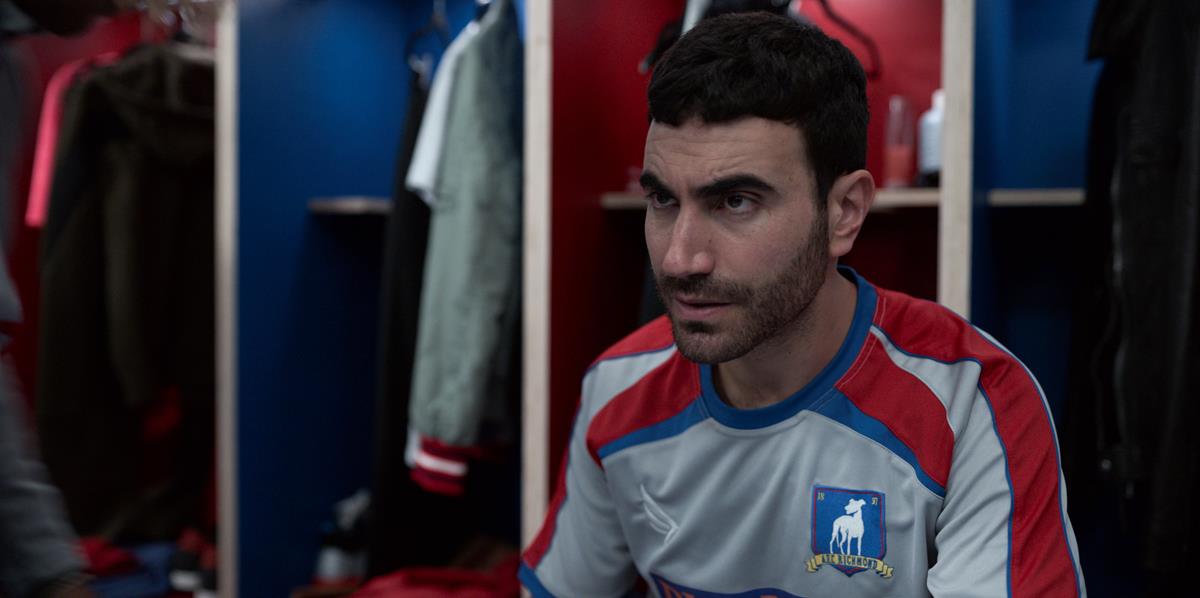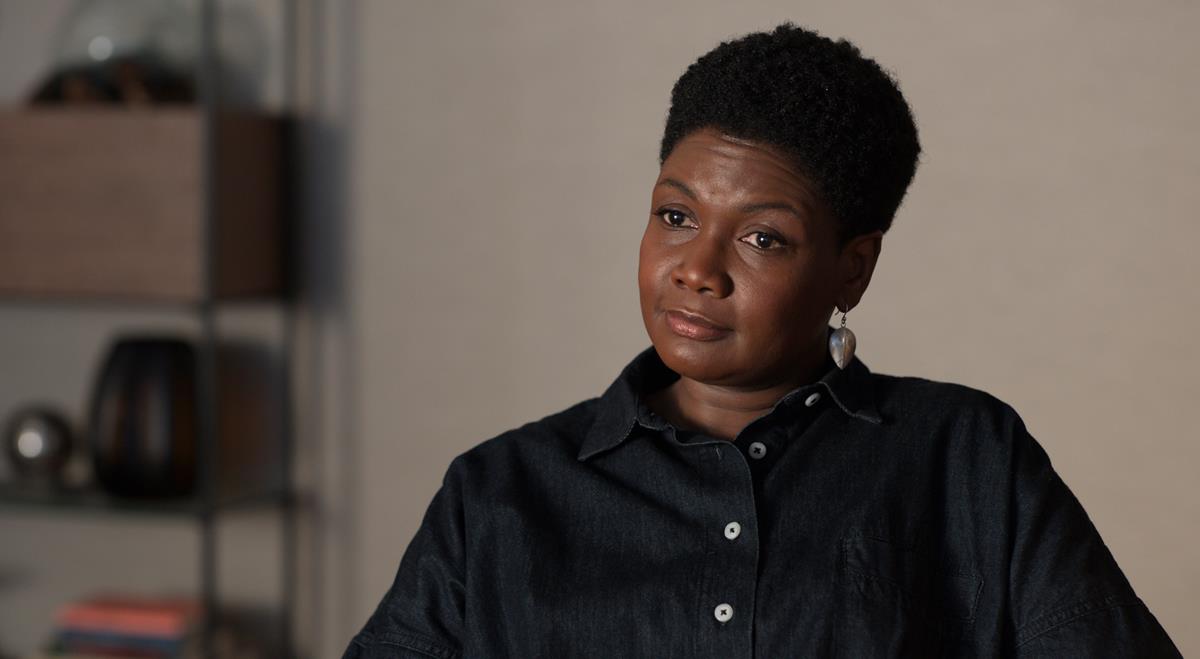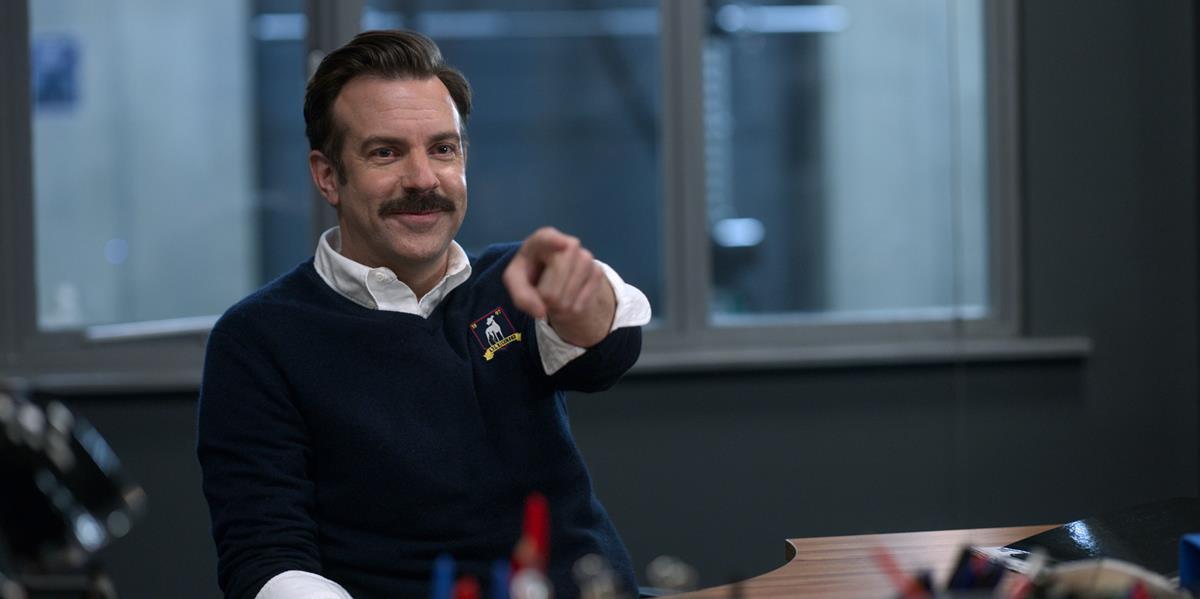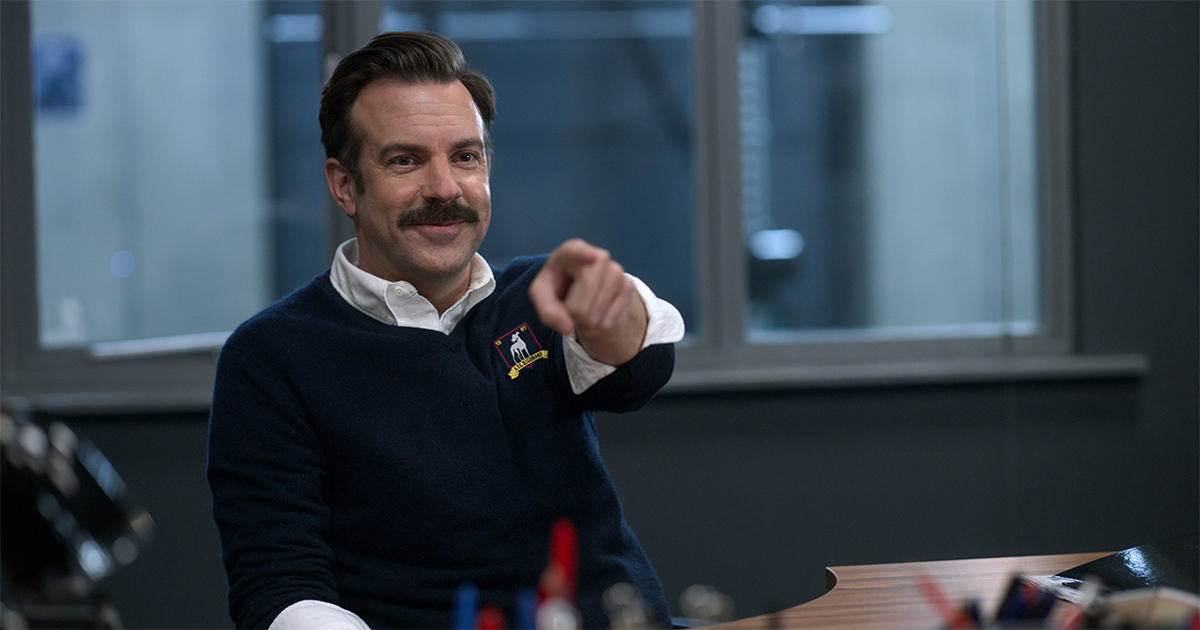
Picture editing, it transpires, is much like a game of soccer: it’s all about teamwork and passing the ball. That’s certainly the ethos among the editorial team at soccer-themed comedy show Ted Lasso, and perhaps a reason why it’s getting kudos for reaching above and beyond the confines of your standard sitcom.
The Apple TV+ show not only landed 20 Emmy nominations, but recently won a Peabody Award for being a “smart, funny, captivating celebration of good-heartedness.”
SNL star Jason Sudeikis portrays the title character, a folksy American college football coach who is enticed to the UK to lead a down-on-their luck Premiere League soccer team. The show’s heart comes from the quietly radical way that Lasso, a man in a position of power, chooses kindness at every turn without sacrificing his authority. He coaches a highly competitive group of athletes to perform at the highest level by embracing vulnerability, empathy and decency.
“Sometimes we’d cut a funny joke because it wasn’t true to the character, and then, on the flip side, sometimes we’d pull back on a very dramatic moment and play a more reserved take to help the moment not get melodramatic.”
Melissa McCoy
Peabody judges characterized Lasso as “affecting change by being a deeply good human, one with his own quiet anxieties and pain.” The series is the perfect counter, they went on, “to the enduring prevalence of toxic masculinity, both on-screen and off, in a moment when the nation truly needs inspiring models of kindness.”
The universality of the show’s characters and writing overrides any need to know much about soccer itself.
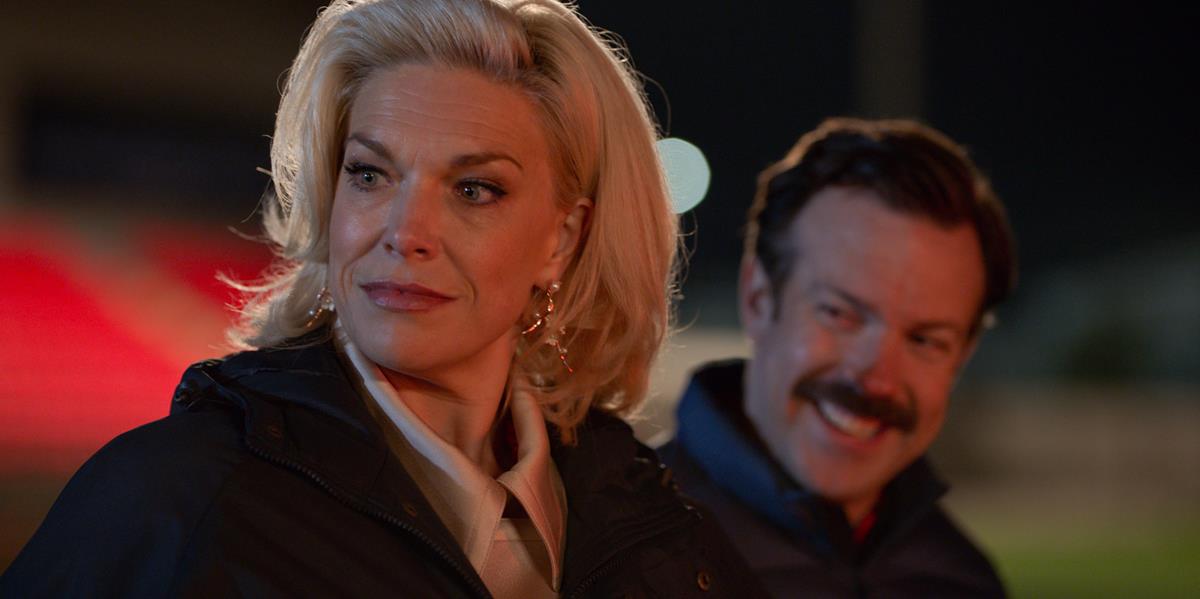
“I’ve learned that a field is a pitch, cleats are boots, and offside is singular,” A.J. Catoline, one of Ted Lasso’s editors, tells Shoot. “But the show is enjoyable even if you don’t like sports. And that’s the point. It’s about being the best version of yourself, even off the field too, be it actual or metaphorical.”
READ MORE: A.J. Catoline, Melissa McCoy Reflect On Editing “Ted Lasso” (Shoot)
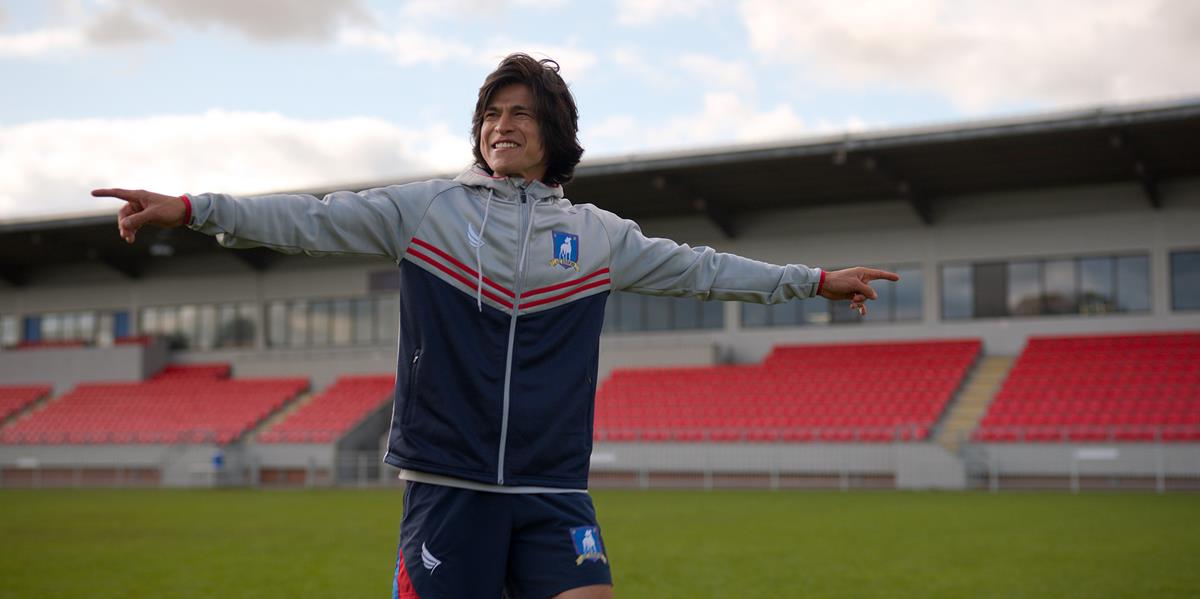
Catoline and Melissa McCoy each earned their first ACE Eddie Award nomination for Ted Lasso: Catoline for “The Hope That Kills You” episode, and McCoy for “Make Rebecca Great Again,” which received the award.
The series has just aired a second season of 12 episodes and has a third run on order from Apple.
The story arc of each season was withheld from almost everyone outside of the writer’s room, the editors included.
“Cutting several episodes, we didn’t know how Season 2 would end,” Catoline tells Cinemontage. “I’ve heard the cast mention that they get the scripts just before filming. I think that helps with spontaneity and improv in the performances. When I got hired, all I knew about the project was the original short films that were made years ago. It wasn’t until before we started that Mel and I got the first few scripts and we could see the show was deeper than a comedy.”
READ MORE: Barbecue Sauce: A.J. Catoline and Melissa McCoy Spill Their Editing Secrets on ‘Ted Lasso (Cinemontage)
Viewers may not realize how much of the show is visual effects. None of the show’s football scenes are shot in a stadium or before a crowd, but created in a combination of pre-viz, photography and post-production.
“To start the previs conversation, I first built the football match using a mix of YouTube clips and stock footage with title cards over the top to basically build the beats,” explains McCoy. “From there, we worked with our post house, Digital Film Tree, to compose the shots with their previs.”
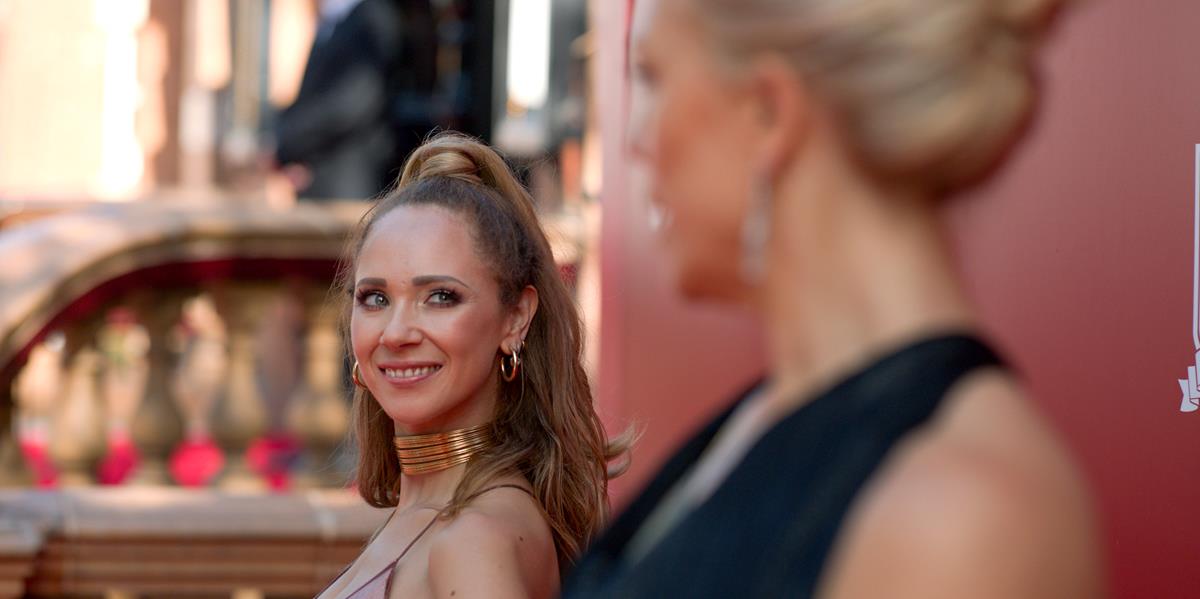
Post-production producer Kip Kroeger used those sequences to help organize the recording of match footage on location in London.
“I’ve learned that a field is a pitch, cleats are boots, and offside is singular. But the show is enjoyable even if you don’t like sports. And that’s the point. It’s about being the best version of yourself, even off the field too, be it actual or metaphorical.”
— A.J. Catoline
“I think having the blueprints of the scenes helped the director feel like he was covering everything we needed and then allowed him to get some amazing shots we never had before in the previs,” McCoy says. “So when all the footage came back, it was another round of building the scene with the real footage, which sometimes took a different direction than the previs.”
McCoy says her biggest challenge was finding the line between comedy and pathos. “Sometimes we’d cut a funny joke because it wasn’t true to the character, and then, on the flip side, sometimes we’d pull back on a very dramatic moment and play a more reserved take to help the moment not get melodramatic.”
In season 1, all the final cuts were performed remotely due to Covid. Season 2 was finished entirely remotely.
“While it’s certainly an advantage to dig into the footage coming from Lasso Land in the comfort of my home, I miss the constant connection with my editorial team,” Catoline shares with Cinemontage. “I miss being able to go next door to Mel’s room and share our insights on watching dailies. We still try to have meetups over Zoom, but I really miss having lunch with my editorial crew. When Mel and I were nominated for an ACE Eddie Award we all popped a bottle of champagne over Zoom.”
Editor Francis Siberini created a trailer for “Ted Lasso that re-imagines the series as a horror movie, with Nate the Great as the villain:


